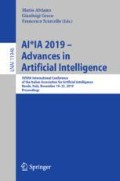Abstract
Biomedical named entity recognition (BioNER) is the task of categorizing biomedical entities. Due to the specific characteristics of the names of biomedical entities, such as ambiguity among different concepts or different ways of referring to the same entity, the BioNER task is usually considered more challenging compared to standard named entity recognition tasks. Recent techniques based on deep learning not only significantly reduce the hand crafted feature engineering phase but also determined relevant improvements in the BioNER task. However, such systems are still facing challenges. One of them is the limited availability of annotated text data. Multi-task learning approaches tackle this problem by training different related tasks simultaneously. This enables multi-task models to learn common features among different tasks where they share some layers. To explore the advantages of the multi-task learning, we propose a model based on convolution neural networks, long-short term memories, and conditional random fields. The model we propose shows comparable results to state-of-the-art approaches. Moreover, we present an empirical analysis considering the impact of different word input representations (word embedding, character embedding, and case embedding) on the model performance.
Access this chapter
Tax calculation will be finalised at checkout
Purchases are for personal use only
Notes
- 1.
The datasets can be found at the following link https://github.com/cambridgeltl/MTL-Bioinformatics-2016.
- 2.
References
Argyriou, A., Evgeniou, T., Pontil, M.: Multi-task feature learning. In: Advances in Neural Information Processing Systems, pp. 41–48 (2007)
Bansal, T., Belanger, D., McCallum, A.: Ask the GRU: multi-task learning for deep text recommendations. In: Proceedings of the 10th ACM Conference on Recommender Systems, pp. 107–114. ACM (2016)
Chieu, H.L., Ng, H.T.: Named entity recognition: a maximum entropy approach using global information. In: Proceedings of the 19th International Conference on Computational Linguistics-Volume 1, pp. 1–7. Association for Computational Linguistics (2002)
Collobert, R., Weston, J., Bottou, L., Karlen, M., Kavukcuoglu, K., Kuksa, P.: Natural language processing (almost) from scratch. J. Mach. Learn. Res. 12(Aug), 2493–2537 (2011)
Crichton, G., Pyysalo, S., Chiu, B., Korhonen, A.: A neural network multi-task learning approach to biomedical named entity recognition. BMC Bioinform. 18(1), 368 (2017)
Dugas, F., Nichols, E.: DeepNNNER: applying BLSTM-CNNs and extended lexicons to named entity recognition in tweets. In: Proceedings of the 2nd Workshop on Noisy User-generated Text (WNUT), pp. 178–187 (2016)
Giorgi, J.M., Bader, G.D.: Transfer learning for biomedical named entity recognition with neural networks. Bioinformatics 34(23), 4087–4094 (2018)
Gridach, M.: Character-level neural network for biomedical named entity recognition. J. Biomed. Inform. 70, 85–91 (2017)
Huang, Z., Xu, W., Yu, K.: Bidirectional LSTM-CRF models for sequence tagging. CoRR abs/1508.01991 (2015). http://arxiv.org/abs/1508.01991
Li, Z., Hoiem, D.: Learning without forgetting. IEEE Trans. Pattern Anal. Mach. Intell. 40(12), 2935–2947 (2018). https://doi.org/10.1109/TPAMI.2017.2773081
Limsopatham, N., Collier, N.: Learning orthographic features in bi-directional LSTM for biomedical named entity recognition. In: Proceedings of the Fifth Workshop on Building and Evaluating Resources for Biomedical Text Mining, BioTxtM@COLING 2016, Osaka, Japan, 12 December 2016, pp. 10–19 (2016). https://aclanthology.info/papers/W16-5102/w16-5102
Luong, M., Le, Q.V., Sutskever, I., Vinyals, O., Kaiser, L.: Multi-task sequence to sequence learning. In: 4th International Conference on Learning Representations, ICLR 2016, San Juan, Puerto Rico, 2–4 May 2016, Conference Track Proceedings (2016). http://arxiv.org/abs/1511.06114
Pohlert, T.: The pairwise multiple comparison of mean ranks package (PMCMR)
dos Santos, C., Guimaraes, V., Niterói, R., de Janeiro, R.: Boosting named entity recognition with neural character embeddings. In: Proceedings of NEWS 2015 The Fifth Named Entities Workshop, p. 25 (2015)
Segura-Bedmar, I., Suárez-Paniagua, V., Martínez, P.: Exploring word embedding for drug name recognition. In: Proceedings of the Sixth International Workshop on Health Text Mining and Information Analysis, Louhi@EMNLP 2015, Lisbon, Portugal, 17 September 2015, pp. 64–72 (2015). https://doi.org/10.18653/v1/W15-2608
Sheldon, M.R., Fillyaw, M.J., Thompson, W.D.: The use and interpretation of the Friedman test in the analysis of ordinal-scale data in repeated measures designs. Physiother. Res. Int. 1(4), 221–228 (1996)
Wang, X., et al.: Cross-type biomedical named entity recognition with deep multi-task learning. Bioinformatics 35(10), 1745–1752 (2019)
Yang, J., Liang, S., Zhang, Y.: Design challenges and misconceptions in neural sequence labeling. In: Proceedings of the 27th International Conference on Computational Linguistics, COLING 2018, Santa Fe, New Mexico, USA, 20–26 August 2018, pp. 3879–3889 (2018). https://aclanthology.info/papers/C18-1327/c18-1327
Zimmerman, D.W., Zumbo, B.D.: Relative power of the Wilcoxon test, the Friedman test, and repeated-measures ANOVA on ranks. J. Exp. Educ. 62(1), 75–86 (1993)
Author information
Authors and Affiliations
Corresponding author
Editor information
Editors and Affiliations
Rights and permissions
Copyright information
© 2019 Springer Nature Switzerland AG
About this paper
Cite this paper
Mehmood, T., Gerevini, A., Lavelli, A., Serina, I. (2019). Leveraging Multi-task Learning for Biomedical Named Entity Recognition. In: Alviano, M., Greco, G., Scarcello, F. (eds) AI*IA 2019 – Advances in Artificial Intelligence. AI*IA 2019. Lecture Notes in Computer Science(), vol 11946. Springer, Cham. https://doi.org/10.1007/978-3-030-35166-3_31
Download citation
DOI: https://doi.org/10.1007/978-3-030-35166-3_31
Published:
Publisher Name: Springer, Cham
Print ISBN: 978-3-030-35165-6
Online ISBN: 978-3-030-35166-3
eBook Packages: Computer ScienceComputer Science (R0)

